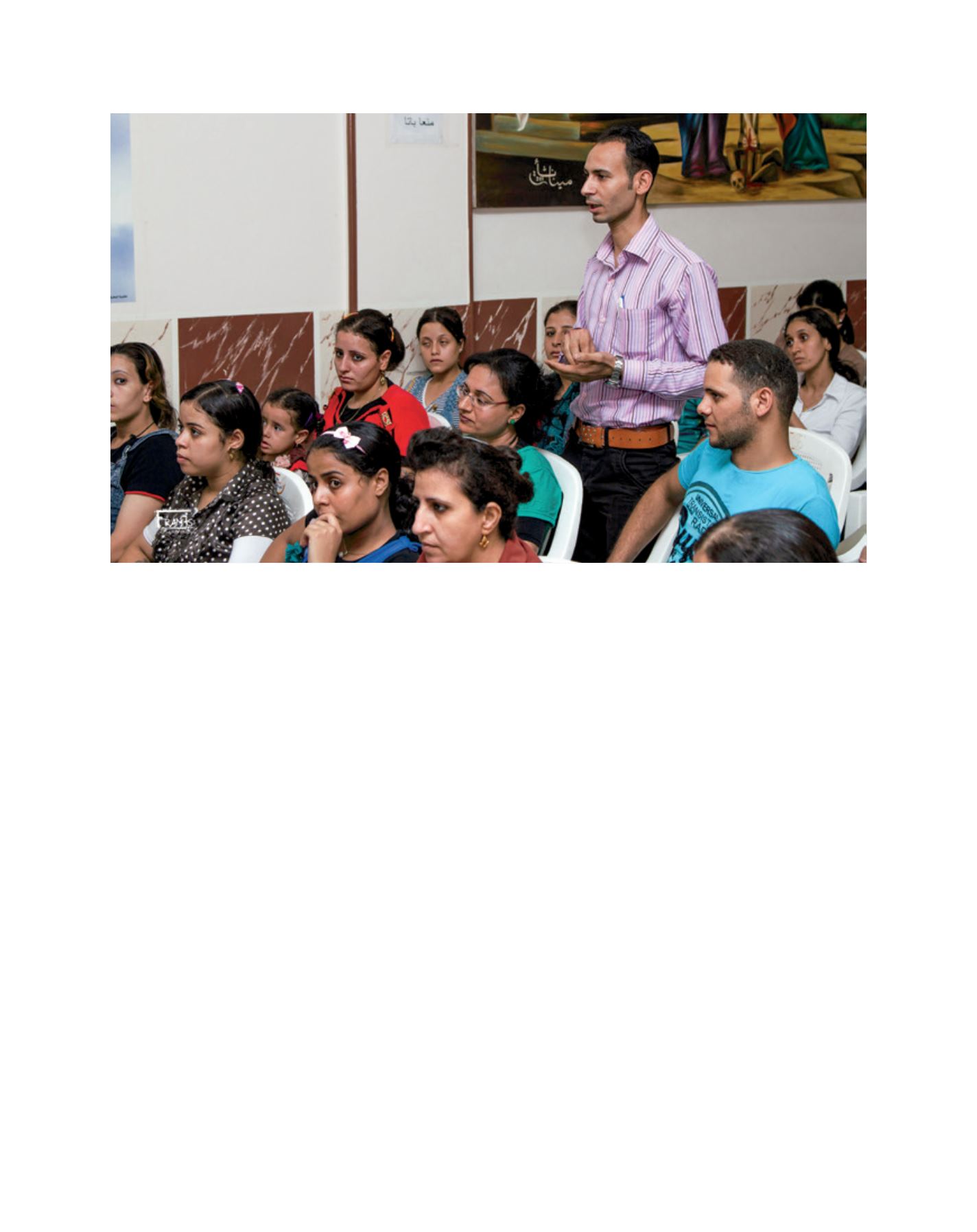

[
] 164
rather be the pivotal point of solidarity. Many religious tradi-
tions insist on the need for solidarity, even further to make
an essential dimension of our human condition. Yet, this first
question leads us subsequently to another question: what
about the recipients and addressees of this solidarity? This
second question is crucial for organizations and institutions.
And it is probably there that we have been in contact with an
important element through our dialogues: religious traditions.
Yet, religious traditions are not mere voices without a body.
They are rather embodied in social groups. Conversations
and dialogues are structured within the social space where
we move and which determines social relations. In several
cases, the dialogue exists and is structured. In other cases, it
is partially structured or not structured at all. The conversa-
tions are part of what already exists: a climate of dialogue
in Senegal, or a dialogue initiated in Ethiopia after the war
in Eritrea, or the struggle against dictatorships between
Pinochet’s adversaries in Chili.
Peace through social justice
The next step was to go beyond conversations and ask reli-
gious traditions and groups whether they could commit
together to develop common solidarity projects, in support
of decent work. We have initiated this in Egypt and
Ethiopia, in both instances engaging the main denomina-
tion, with the support of the World Council of Churches,
an organization that has a long tradition of dialogue among
churches and beyond. The focus was on youth employ-
ment, an issue where Egyptian religious organizations had
already engaged meaningfully.
The process was conceived as gradual: first a common
commitment based on shared values; second, a common
diagnosis; third, pilot projects supported by capacity-building
activities and, lastly, full-fledged projects. The process has not
reached this final phase yet.
The diagnosis phase is essential. It is inherited from a
classical approach derived from social dialogue, involv-
ing governments, workers and employers’ organizations.
A common solution can only be developed based on a
minimal common understanding of the situation. It was
made here through surveys and focus groups. Pilot projects
are also a means to get an assessment of the needs and
capacities of the partners.
As the experience is still ongoing, it is probably too early to
assess the results. Trust is an essential element. It imposes a
necessity for the international organization to review and reas-
sess its positioning. It cannot be a lesson giver, or merely an
expert provider. It has to accompany its partners in the search
for meaningful solutions. It needs also to find the proper level
of mitigation, between its own working methods and the one
that can be adapted to the methods of its partners.
At the end, I believe the experience is essentially meaning-
ful. It brings back the ILO to the intuition of its founders.
Work has become pivotal in many industrialized societies
to operationalize solidarity. It enabled us to enlarge soli-
darities across communities, across affiliations. This is also
what can be done when religious organizations start working
together and contributing to a common good. This is prob-
ably a meaningful way to bring peace through social justice,
at a modest yet tangible level.
2
Image: ILO
The word ‘dignity’ resounded constantly in our conversations on labour
A
gree
to
D
iffer

















